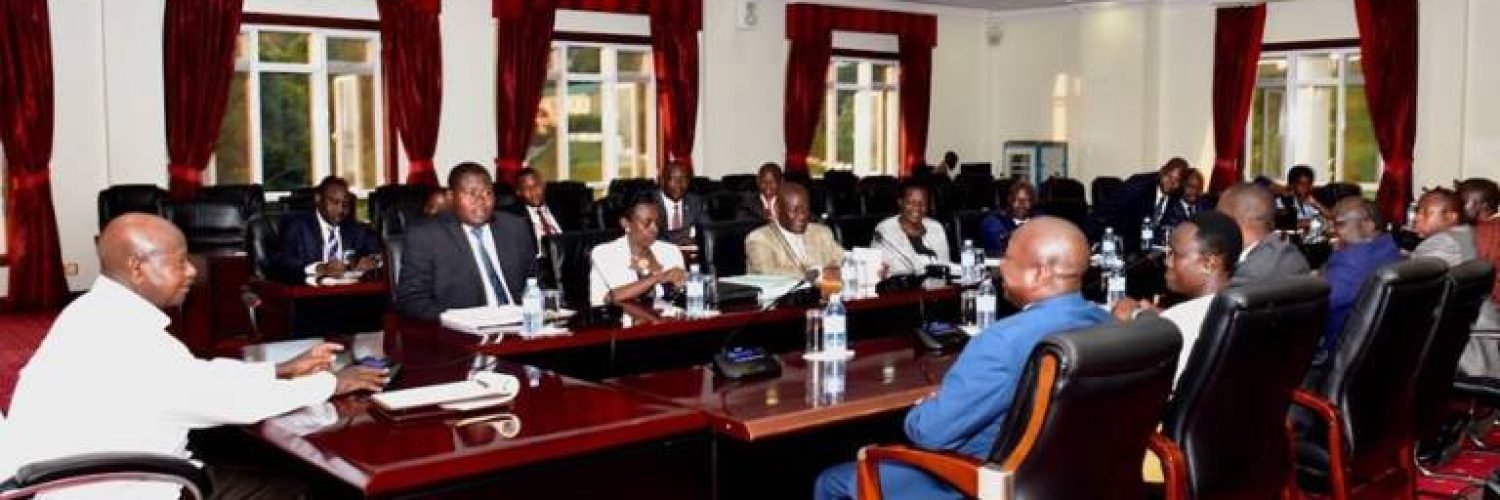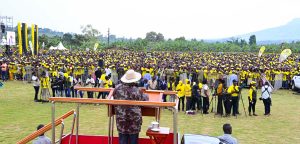The Government
Uganda is a Sovereign State and a Republic. It is a sitting member of the United Nations, African Union, The East African Community and the Commonwealth.
The Government of the Republic of Uganda is a Democracy made up of three arms: The Executive – comprising of The President, The Vice President, The Prime Minister, The Cabinet; The Legislature – The Parliament; and The Judiciary – Magistrates’ Courts, High Court, Court of Appeals (Constitutional Court), Supreme Court. The Constitution of Uganda was promulgated October 8, 1995 on the eve of Uganda’s Independence Day anniversary held annually on October 9 since 1962.
The Executive
The power of the Executive Branch is vested in the President of Uganda, who also acts as head of state and Commander-in-Chief of the armed forces. The President is responsible for implementing and enforcing the laws written by Parliament and, also appoints the Cabinet. The Vice President is also part of the Executive Branch, ready to assume the Presidency should the need arise.
The President
Gen. Yoweri Kaguta Museveni is the current president of Uganda.
The President is both the head of state and head of government of the Republic of Uganda, and Commander-in-Chief of the armed forces.
Yoweri Kaguta Museveni became President of the Republic of Uganda on January 29, 1986 after leading a successful five-year liberation struggle. He went to the bush with 26 other young men and organized the National Resistance Movement and National Resistance Army (NRM/NRA) to oppose the tyranny that previous regimes had unleashed upon the population.
After victory, he formed a broad-based government that helped to unite the country’s political groups.
Previous to the struggle of 1981-1986, Museveni had been one of the leaders in the anti-Amin resistance of 1971-1979 that had led to the fall of that monstrous regime.
Museveni, who has been politically active since his student days at Ntare School, Mbarara, in south west Uganda, studied political science at the University of Dar es Salaam, graduating in 1970 with a Bachelor of Arts degree in Economics and Political Science.
After Idi Amin’s coup in 1971, Museveni was instrumental in forming Fronasa (the Front for National Salvation). Fronasa made up the core of one of the Ugandan fighting groups which, together with the Tanzanian People’s Defence Forces, ousted Amin’s regime in April 1979.
The office of President is contested for after every five years when the constitutional term of office expires. In March 2006, Uganda had the first presidential and parliamentary elections in 25 years. The NRM party won the election under the Chairmanship of Mr. Yoweri Kaguta Museveni.
He was first elected president in 1996 and re-elected in 2001 and 2006. He was elected for a fourth consecutive term in office in February 2011 and sworn in on 12 May 2011.
Click here for more information about the President
The Vice President
The current Vice President is Jessica Rose Epel Alupo she is a Ugandan politician, educator and formar military officer. She previously served in the cabinet of Uganda as Minister of Education between 2011 and 2016. She is also an elected member of parliament as Katakwi District`s women`s representative
Click here for more information about the Vice President
The Prime Minister
Robinah Nabbanja is a Ugandan educator and politician. She is the first female Prime Minister of Uganda.
Previously, she served as State Minister of Health for general duties between 14 December 2019 until 3rd May 2021.
She is also the Member of Parliament Kakumiro District women constituency in the 11th Parliament.
Click here for more information about the Prime Minister.
The Cabinet
The Cabinet of Uganda, according to the Constitution of Uganda, “shall consist of the President, the Vice President and such number of Ministers as may appear to the President to be reasonably necessary for the efficient running of the State.”
Cabinet Ministers are deputized by Ministers of State.








